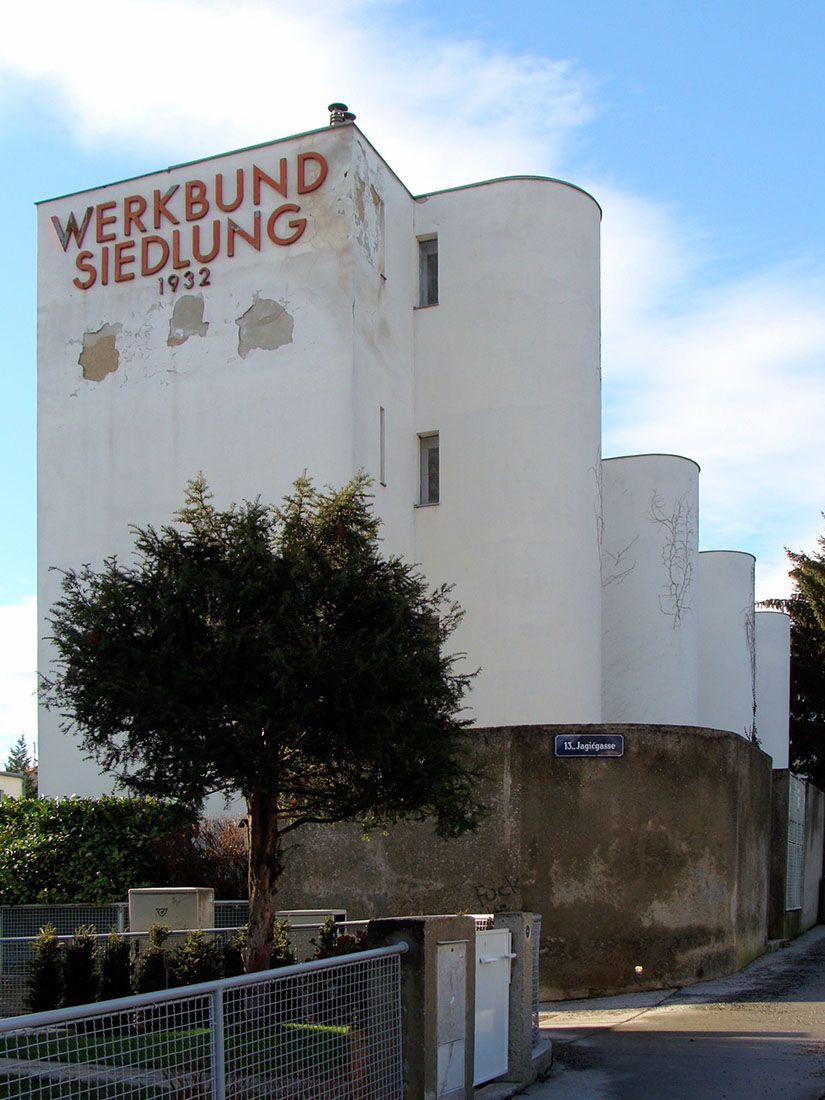 |
 |
 |
 |


Werkbund Settlement Vienna
Veitingergasse 87 - 93
1932
The terraced houses of André Lurçat for the Vienna Werkbund Exhibition are among the most striking constructions for this development.
The building is impressive, with its closed, block-like design and rounded staircase towers that project forward from the façade.
The unwelcoming character of the street front is enhanced by the few narrow windows near the rounded towers and by the high walls of the front gardens.
In contrast with the street facade André Lurçat opens the garden front of both upper storeys with continuous bands af south-facing windows.
On top of the row of white houses is a continuous roof terrace, which is accesible only form house no.25. On the narrow side of the building,
facing the city, is a prominent inscription "Werkbundsiedlung 1932".
All four houses are south oriented and offer a living space of 68 m². The plan layout shows a division into three functional areas,
corresponding to the three storeys. Each house occupies an area of only 38 m², so that it was necessary to reduce the circulatory spaces
to an absolute minimum. More or less half the ground floor is left open, so that ther is a covered sitting area with access to the garden
along the working rooms, which include a washroom, a cellar and a store-room. The staircase towers, which are set in front of the main body of the building
are equiped with artificial stone steps. These steps lead to the first storey with living room, kitchen, secondary room and lavatory. The last storey has
two bedrooms, which are accessible by a small ante-room. The two bathrooms are divided by a bathroom. Criticism of André Lurçat's building
concentrated not only on the unwelcoming character and on the fenestration which was considered ill-suited to the local climate, but also and
particularly on the layout, which required much climbing of stairs.
André Lurçat intended his houses to represent the rationalistic flat desing by housing built-in furniture, as it was promoted since the early 1920s.
The intention of the architect was, that the flats contain flexible furnishings, such as foldable beds and tables. His drawings show possible scenarios
for day and night furnishings: On the second floor, for instance, the beds could be folded up and made to ‘disappear’ into the wall when not required.
These furnitures should be able to create additional living space for the inhabitants during the day.